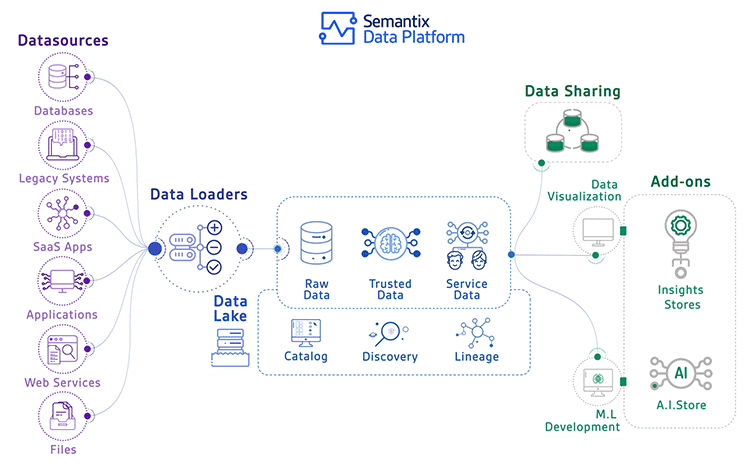In today’s fast-paced digital economy, data is the backbone of business success. Organizations generate vast amounts of data from multiple sources, and without a robust data infrastructure, they risk inefficiencies, poor decision-making, and lost opportunities.
A modern data platform provides the foundation for seamless data integration, storage, processing, and analysis. In this post, I’ll explore why businesses need a strong data infrastructure, how platforms like the Semantix Data Platform address these needs, and how my expertise as a data warehouse and data engineering consultant can help organizations build scalable, efficient data ecosystems.

Why a Robust Data Infrastructure is Essential
Organizations dealing with fragmented, inconsistent, and slow data pipelines often struggle with:
Delayed Decision-Making: Without a well-structured data pipeline, businesses rely on outdated reports.
Data Silos: Disconnected systems make it difficult to access and analyze critical business data.
Poor Data Quality: Inconsistent or inaccurate data leads to unreliable insights.
Scalability Issues: Legacy infrastructures often cannot handle the increasing volume, variety, and velocity of data.
A robust data infrastructure solves these challenges by providing:
Seamless Data Integration: Connecting databases, applications, SaaS platforms, and web services into a single ecosystem.
Efficient Data Processing: Transforming raw data into trusted, high-quality data for analytics and AI applications.
Advanced Analytics & AI Readiness: Preparing data for real-time business intelligence and machine learning models.
Scalability & Cost Optimization: Enabling businesses to grow without performance bottlenecks.
Key Components of a Strong Data Infrastructure
The Semantix Data Platform is an example of how modern data platforms provide a structured approach to managing data. Its architecture consists of:
1. Data Sources & Ingestion
- Databases (SQL, NoSQL, Cloud-based)
- Legacy Systems & SaaS Applications
- Web Services & API Integrations
- Structured & Unstructured Files
2. Data Processing & Governance
- Data Lake: Storing raw data in a scalable environment
- Data Catalog & Lineage: Ensuring traceability and compliance
- Trusted Data Layer: Cleaning and enriching data for business intelligence and AI
3. Data Sharing & Utilization
- Data Visualization: Dashboards and reporting tools
- ML Development: Supporting AI and predictive analytics
- Insights & AI Stores: Enabling data monetization and automation
How I Can Help as a Data Engineering Consultant
As a data warehouse and data engineering specialist, I help businesses build future-proof data architectures that support:
✔️ End-to-End Data Pipelines: From ingestion to advanced analytics
✔️ Optimized Data Warehousing: For fast, efficient query performance
✔️ Cloud Migration & Scalability: Enabling seamless transitions to cloud platforms
✔️ AI & Machine Learning Readiness: Ensuring high-quality data for predictive analytics
Conclusion
Businesses that invest in a robust data infrastructure gain a competitive edge by making faster, smarter, and data-driven decisions. Whether you’re looking to modernize your data warehouse, optimize pipelines, or integrate AI into your data strategy, I can help.
Let’s work together! Contact

Leave a Reply